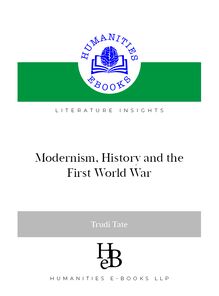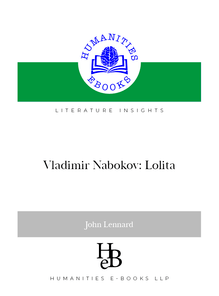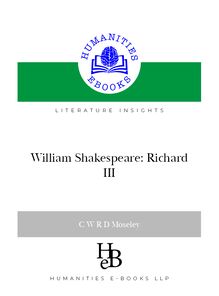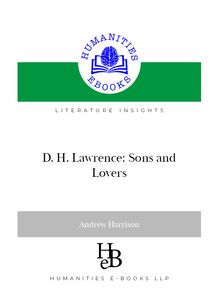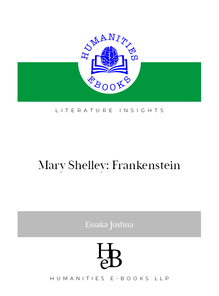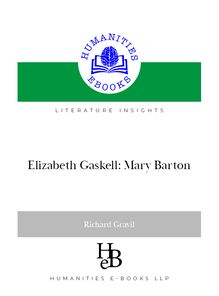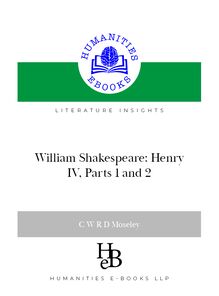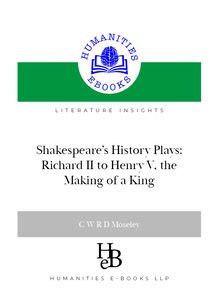-
 Univers
Univers
-
 Ebooks
Ebooks
-
 Livres audio
Livres audio
-
 Presse
Presse
-
 Podcasts
Podcasts
-
 BD
BD
-
 Documents
Documents
-
- Cours
- Révisions
- Ressources pédagogiques
- Sciences de l’éducation
- Manuels scolaires
- Langues
- Travaux de classe
- Annales de BEP
- Etudes supérieures
- Maternelle et primaire
- Fiches de lecture
- Orientation scolaire
- Méthodologie
- Corrigés de devoir
- Annales d’examens et concours
- Annales du bac
- Annales du brevet
- Rapports de stage
La lecture à portée de main
101 pages
English
Découvre YouScribe en t'inscrivant gratuitement
Je m'inscrisDécouvre YouScribe en t'inscrivant gratuitement
Je m'inscris
Obtenez un accès à la bibliothèque pour le consulter en ligne
En savoir plus
En savoir plus
101 pages
English
Obtenez un accès à la bibliothèque pour le consulter en ligne
En savoir plus
En savoir plus

Description
Reading ToniMorrison’s Beloved Paul McDonald An American Insight from Humanities-Ebooks Using this Ebookt *7KLV ERRN LV GHVLJQHG WR EH UHDG LQ VLQJOH SDJH YLHZ XVLQJ WKH µ¿W page’ command. *To navigate through the contents use the hyperlinked ‘Bookmarks’ at the left of the screen. *To search, click the search symbol. *For ease of reading, use to enlarge the page to full screen, and return to normal view using . *Hyperlinks (if any) appear in Blue Underlined Text. Permissions Your purchase of this ebook licenses you to read this work on-screen. You may print a copy of the book for your own use but copy and paste functions are disabled. No part of this publication may be otherwise reproduced or transmitted or distributed without the prior written permission of both the copyright owner and the publisher. This work is copyright. Making or distributing copies of this book would constitute copyright infringement and would be liable to prosecution. Thank you for respecting the rights of the author. Reading Toni Morrison’sBeloved A Literature Insight by Paul McDonald HEBƁ +XPDQLWLHV (ERRNV //3 © Paul McDonald, 2013 he Author has asserted his right to be identiied as the author of this Work in accordance with the Copyright, Designs and Patents Act 1988.
Sujets
Informations
| Publié par | Humanities eBooks |
| Date de parution | 11 janvier 2021 |
| Nombre de lectures | 0 |
| EAN13 | 9781847602879 |
| Langue | English |
| Poids de l'ouvrage | 3 Mo |
Informations légales : prix de location à la page 0,0000€. Cette information est donnée uniquement à titre indicatif conformément à la législation en vigueur.
Extrait
Reading Toni Morrison’s Beloved
Paul McDonald
An American Insight from HumanitiesEbooks
Using this Ebookt
*This book is designed to be read in single page view, using the ‘ît page’ command. *To navigate through the contents use the hyperlinked ‘Bookmarks’ at the left of the screen. *To search, click the search symbol. *For ease of reading, use <CTRL+L> to enlarge the page to full screen, and return to normal view using < Esc >. *Hyperlinks (if any) appear in Blue Underlined Text.
Permissions
Your purchase of this ebook licenses you to read this work on-screen.
You may print a copy of the book for your own use but copy and paste functions are disabled.
No part of this publication may be otherwise reproduced or transmitted or distributed without the prior written permission of both the copyright owner and the publisher.
This work is copyright. Making or distributing copies of this book would constitute copyright infringement and would be liable to prosecution. Thank you for respecting the rights of the author.
Reading Toni Morrison’sBeloved
A Literature Insight
by Paul McDonald
HEB☼ Humanities-Ebooks, LLP
© Paul McDonald, 2013
he Autor as asserted îs rîgt to be îdentîied as te autor of tîs Work în accordance wît te Copyrîgt, Desîgns and Patents Act 1988.
Fîrst publîsed byHumanitiesEbooks, LLP, Tîrrîl Hall, Tîrrîl, Penrît CA10 2JE
Cover îmage © Pamela Dumont
he Pdf Ebook îs avaîlable to prîvate purcasers from ttp://www.umanîtîes-ebooks.co.uk and to lîbrarîes from Ebrary, EBSCO and MyîLîbrary.com.
ISBN 978-1-84760-287-9 Pdf Ebook ISBN 978-1-84760-327-2 Paperback ISBN 978-1-84760-328-9 Kîndle Ebook ISBN 978-1-84760-329-6 ePub Ebook
Contents
1. Introduction
2. Biographical and Social Context 2.1 Morrison before Beloved. 2.2 The Publication of Beloved. 2.3 Morrison after Beloved 3. Literary Strategies 3.1 Magic Realism 3.2 Call and Response Structures 3.3 Beloved and the Jazz Aesthetic 3.4 Free Indirect Discourse 4. Sequential Development and Analysis 4.1 Chapter One 4.2 Chapters Two and Three Rememory 4.3 Chapters Four, Five and Six 4.4 Chapters Seven and Eight 4.5 Chapters Nine, Ten and Eleven 4.6 Chapters Twelve, Thirteen and Fourteen 4.7 Chapter Fifteen 4.8 Chapters Sixteen and Seventeen 4.9 Chapter Eighteen Part Two 4.10 Chapter Nineteen 4.11 Chapters Twenty to Twenty Three 4.12 Chapters Twenty Four and Twenty Five Part Three 4.13 Chapters Twenty Six, Seven, and Eight
7
9 9 13 15 18 18 21 24 27 30 30 34 35 37 39 41 44 46 47 49 50 50 55 57 60 60
6
Paul McDonald
5. Interpreting Beloved 5.1 Beloved and Modernism 5.2 Beloved and Postmodernism 5.3 Beloved and Realism 5.4 Language and Motherhood in Beloved 5.5 Dissenting Voices 5.6 Beloved the Film 6. Selected Bibliography 6.1 Works on Beloved 6.2 Works on Toni Morrison 6.3 Internet Sources Character List Sethe Beloved Denver Paul D Baby Suggs (aka Grandma Baby) Schoolteacher Stamp Paid Amy Denver Halle Suggs Sixo Mr. and Mrs. Garner Lady Jones Ella Mr. and Miss Bodwin Paul F and Paul A Buglar and Howard Nan Sethe’s Mother A Note on the Author
64 64 69 73 78 83 85 88 88 89 90 91 91 91 92 92 92 93 93 93 94 94 94 94 95 95 95 95 96 96 97
1. Introduction
Toni Morrison’sBelovedis one of the most successful novels of all time, selling millions of copies internationally and inspiring critical commentary from scholars of the highest distinction. Its inuence is such that it is studied by students of literature around the world and is often cited as one of the most signiîcant books of modern times. However, its popularity belies its difîculty: many înd the novel hard to read, struggling with its structure and occasionally fragmented style. This guide is designed to help readers engage with this com-plex book and achieve a deeper understanding of its context, the lit-erary strategies it employs, and the various ways in which it has been interpreted since its publication in 1987. The book has been seen as both modernist and postmodernist in its form and philosophy. Its disorientating narrative strategy is occa-sionally reminiscent of those modernist writers who stress the frag-mented nature of experience, while its subversive approach to history asserts a îctional past that is characteristically postmodern. At the same timeBelovedcan also be seen as a work of scrupulous realism, painstakingly researched; and while it is occasionally described as magic realist, the author is careful to offer a non-supernatural expla-nation for the appearance of her otherworldly eponymous character. Such issues have preoccupied critics since the novel was published and this guide addresses them, showing how they relate to the text’s primary themes of racism, motherhood, language, and history’s bear-ing on the present. Morrison’s African American heritage is central to this and informs the book’s representation of the world at every level. Its attitude to the past is distinctly African American, for instance, as concepts like ‘rememory’ attest. Likewise African American tra-ditions inuence the book’s style with its use of call-and-response structures, its tolerance of ambiguity and openness, and its afînities with jazz music and black oral culture.Belovedoffers few answers
8
Paul McDonald
to the questions it addresses, putting the onus of interpretation on the reader, but it is impossible to engage fully with the novel without an understanding of those questions: this guide ensures that readers can appreciate them, and thus fully beneît from Morrison’s extraordinary achievement.
2. Biographical and Social Context
2.1 Morrison before Beloved.
Toni Morrison was born ChloeArdeliaWofford in Lorain, Ohio in 1931. Her parents were Southerners who migrated north to Ohio in the early twentieth century, and this is where Morrison spent her youth. She attended Lorain High School where she was an honours student, developing a love of the classics of European literature from Jane Austen to Dostoevsky; at the same time her home life inspired a fondness for less formal storytelling, including traditional tales from non–western oral culture: her feel for spoken language would go on to have a signiîcant inuence on the character and complexion of Morrison’s writing. Toni Morrison became a Catholic at the age of 12 and took the conîrmation name Anthony, changing this to Toni because people 1 kept mispronouncing it. Her interest in religion at this early age is indicative of a serious mind, and she was intelligent too: when she entered Howard University she was the îrst member of her family to attend college. She majored in English with a classics minor, gradu-ating with a BA in 1953. She followed this with an MA in English from Cornell University, her thesis focusing on the theme of aliena-tion and death in the work of Virginia Woof and William Faulkner. The unconventional narrative strategies of such writers have a bear-ing on Morrison’s own style as will be seen later. After graduating from Cornell in 1955, Morrison spent some time as a teacher, îrst at Texas Southern University, then at the University of Houston. In 1958 she married the Jamaican architect, Howard Morrison. The marriage produced two children, Harold Ford Morrison (1961) and Slade Kevin Morrison (1964), but ended in divorce in 1964. It seems
1 Toni Morrison: ‘I want to feel what I feel. Even if it’s not happiness’ Interview withEmma Brockes.The Guardian, Friday 13 April 2012. See online sources.
10
Paul McDonald
that there were unbridgeable cultural differences between Morrison and her husband: his attitude to women appears to have been rather backward–looking, and this clashed with Morrison’s independence. In order to escape the pressure of marriage and domesticity Morrison began attending a creative writing group, and this was an important move: though she initially had no plans to become an author, the group stimulated her interest in writing; at îrst she shared material that she had written at college, but gradually went on to create origi-nal stories for the group, some of which found their way into her later îction. Her interest in writing took a slightly different course in 1965 when she responded to an advert she saw for a job as a text-book editor. Despite being a single mother with two children she took the huge step of giving up full time teaching to pursue a career as an editor, îrst at a subsidiary of Random House in Syracuse, New York; then from 1967 as a senior editor at the Random House city headquarters. In the late 60s Morrison began work on her îrst novel,The Bluest Eye, which after a number of rejections was eventually published in 1970. The novel grew out of a short story she had originally written for her writing group some years earlier. Told in both the îrst and third person, the plot concerns an eleven year old African American girl, Pecola Breedlove, who, feeling inferior because of her looks, yearns for blue eyes and a white complexion. Set in Morrison’s home town of Lorain in 1941, it is partly about black identity and the prob-lems of achieving self–respect in the face of conventional notions of beauty: Pecola goes insane as a result of her quest for beauty, and the novel ends with her imagining that she actuallydoesthe have blue eyes that she desires. The story is markedly unsettling in parts— at one point Pecola is raped by her drunken father—and it attracted much controversy as a result; there have even been attempts to ban it from schools in the States. Many critics praised the sensitivity with which Pecola is depicted, however, and the astonishing lyricism of Morrison’s prose. While the novel was not commercially successful, it was clear to most reviewers that it marked the arrival of a major talent. Morrison achieved an important and inuential position as an
-
 Univers
Univers
-
 Ebooks
Ebooks
-
 Livres audio
Livres audio
-
 Presse
Presse
-
 Podcasts
Podcasts
-
 BD
BD
-
 Documents
Documents
-
Jeunesse
-
Littérature
-
Ressources professionnelles
-
Santé et bien-être
-
Savoirs
-
Education
-
Loisirs et hobbies
-
Art, musique et cinéma
-
Actualité et débat de société
-
Jeunesse
-
Littérature
-
Ressources professionnelles
-
Santé et bien-être
-
Savoirs
-
Education
-
Loisirs et hobbies
-
Art, musique et cinéma
-
Actualité et débat de société
-
Actualités
-
Lifestyle
-
Presse jeunesse
-
Presse professionnelle
-
Pratique
-
Presse sportive
-
Presse internationale
-
Culture & Médias
-
Action et Aventures
-
Science-fiction et Fantasy
-
Société
-
Jeunesse
-
Littérature
-
Ressources professionnelles
-
Santé et bien-être
-
Savoirs
-
Education
-
Loisirs et hobbies
-
Art, musique et cinéma
-
Actualité et débat de société
- Cours
- Révisions
- Ressources pédagogiques
- Sciences de l’éducation
- Manuels scolaires
- Langues
- Travaux de classe
- Annales de BEP
- Etudes supérieures
- Maternelle et primaire
- Fiches de lecture
- Orientation scolaire
- Méthodologie
- Corrigés de devoir
- Annales d’examens et concours
- Annales du bac
- Annales du brevet
- Rapports de stage
Signaler un problème
YouScribe
Le catalogue
Le service
© 2010-2024 YouScribe
